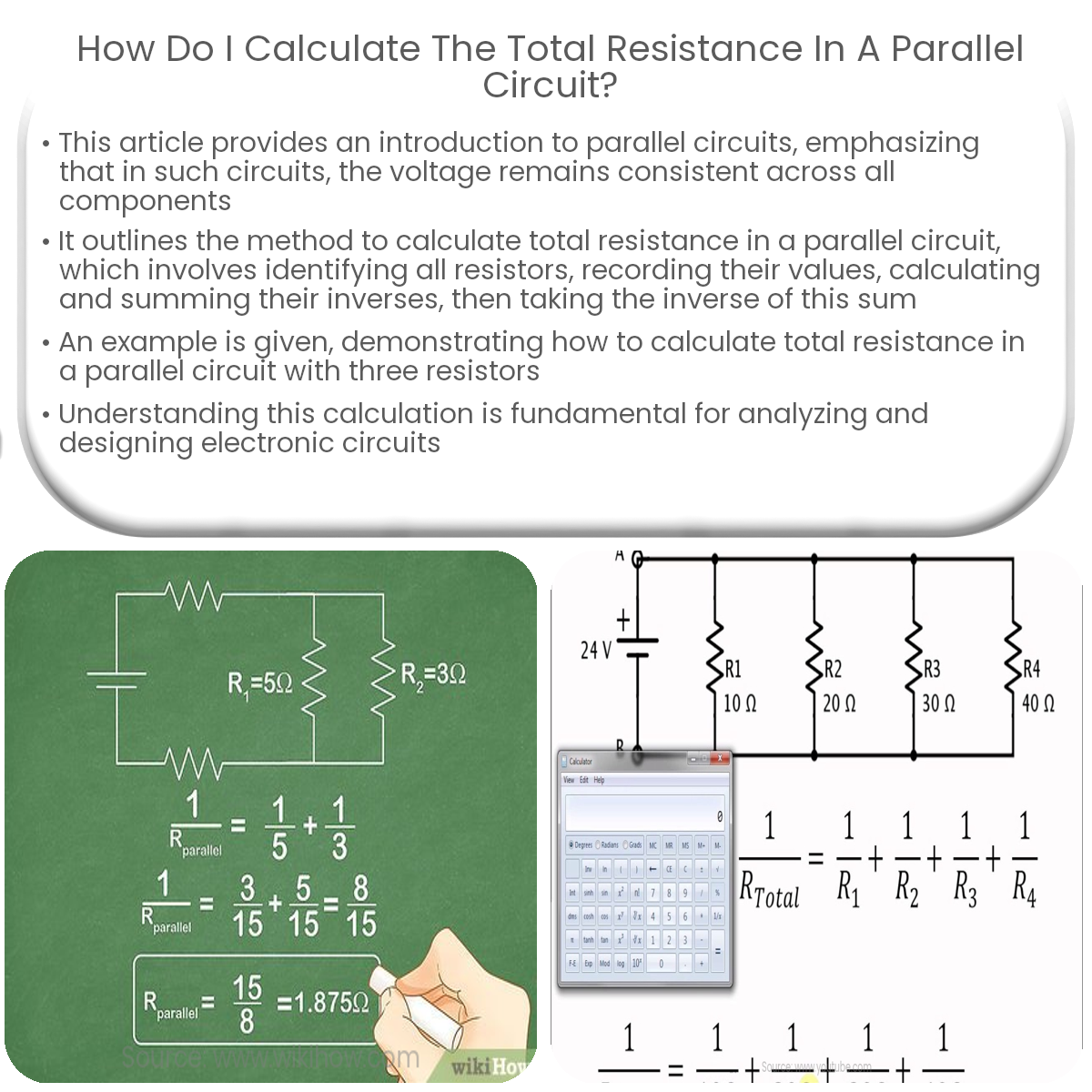For a parallel circuit, calculate total resistance by finding the inverse of the sum of the inverses of individual resistances (Rₜ = 1/Σ(1/Rᵢ)).
Introduction to Parallel Circuits
In a parallel circuit, components are connected side-by-side, with multiple paths for the current to flow. One key characteristic of parallel circuits is that the voltage remains the same across all components. This article will explain how to calculate the total resistance in a parallel circuit.
Total Resistance in Parallel Circuits
The total resistance (RT) in a parallel circuit is determined by the inverse of the sum of the inverses of the individual resistances of all the resistors connected in parallel. This is due to the fact that the current is divided among the parallel branches, and the total current flowing into the circuit is equal to the sum of the currents flowing through each resistor.
Calculating Total Resistance
To calculate the total resistance in a parallel circuit, follow these steps:
- Identify all the resistors connected in parallel within the circuit. This can be done by tracing the current paths and locating each resistor along the way.
- Write down the resistance values of each resistor. These values are typically labeled on the resistors themselves or provided in a circuit schematic.
- Calculate the inverse of each resistance value (1/Ri).
- Add the inverses of the resistance values to find the sum of the inverses (Σ(1/Ri)).
- Take the inverse of the sum of the inverses to find the total resistance (RT = 1/Σ(1/Ri)).
Example Calculation
Consider a parallel circuit with three resistors connected in parallel: R1 = 5 ohms, R2 = 10 ohms, and R3 = 20 ohms. To calculate the total resistance, follow these steps:
1. Calculate the inverse of each resistance value: 1/5, 1/10, and 1/20.
2. Add the inverses of the resistance values: (1/5) + (1/10) + (1/20) = 0.2 + 0.1 + 0.05 = 0.35.
3. Take the inverse of the sum of the inverses: RT = 1/0.35 ≈ 2.86 ohms.
Thus, the total resistance of this parallel circuit is approximately 2.86 ohms.
Conclusion
Calculating the total resistance in a parallel circuit involves finding the inverse of the sum of the inverses of the individual resistance values of all the resistors connected in parallel. Understanding how to calculate total resistance is essential for analyzing and designing electronic circuits.




